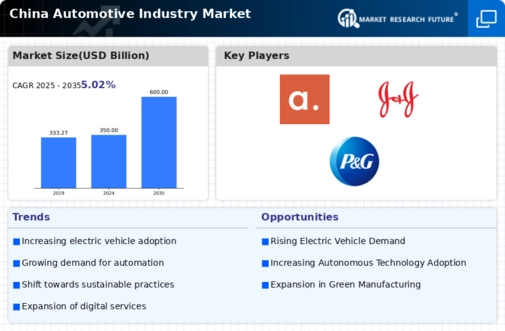Market Share
China Automotive Industry Market Share Analysis
The China automotive industry, renowned for its rapid growth and innovation, employs various market share positioning strategies to navigate the dynamic and competitive landscape. As the world's largest automobile market, China's automotive industry encompasses a wide range of manufacturers, from domestic players to international joint ventures. One fundamental strategy involves product differentiation through innovation. Companies invest heavily in research and development to introduce cutting-edge technologies, electric vehicles, and smart features, aiming to appeal to tech-savvy consumers. By staying at the forefront of automotive innovation, manufacturers can position themselves as leaders in a market increasingly focused on sustainability and technological advancement.
Collaboration and partnerships are integral components of market share positioning in China's automotive industry. Joint ventures between domestic manufacturers and international counterparts enable the exchange of expertise, technology, and resources. This approach not only facilitates the integration of global best practices but also strengthens the brand image, as collaborations with established international players often enhance the perceived quality and reliability of Chinese automotive products. Strategic partnerships also open avenues for accessing new markets, contributing to the expansion of a manufacturer's global footprint.
Government policies and regulations play a significant role in shaping market share positioning strategies in China's automotive industry. The Chinese government has been actively promoting the development and adoption of electric vehicles (EVs) through subsidies, incentives, and regulations. Automotive companies strategically align their product portfolios with these policies, emphasizing the production of electric and hybrid vehicles to capitalize on government support and meet the evolving preferences of environmentally conscious consumers. Adapting to and leveraging government initiatives allows companies to gain a competitive edge and strengthen their market positions.
Market segmentation is another key aspect of market share positioning in the diverse Chinese automotive market. With a vast consumer base encompassing various demographics and preferences, manufacturers tailor their product offerings to cater to specific segments. Some companies focus on producing affordable and practical vehicles for mass-market appeal, while others target the luxury or high-performance segments. Understanding and effectively catering to the diverse needs of different consumer groups enable manufacturers to capture a larger share of the market and establish a strong presence across various automotive segments.
E-commerce and digitalization have become essential components of market share positioning strategies in China's automotive industry. Online platforms and digital marketing play a crucial role in reaching and engaging with tech-savvy consumers. Companies leverage e-commerce channels not only for sales but also for brand promotion, customer engagement, and data analytics. Developing user-friendly mobile apps and online platforms enhances the overall customer experience, making it easier for consumers to research, purchase, and maintain their vehicles, thus contributing to brand loyalty and market share growth.
Brand building and reputation management are paramount in the highly competitive Chinese automotive market. Companies invest in marketing campaigns, sponsorships, and brand-building initiatives to create a positive image among consumers. Establishing trust and credibility is crucial, especially in a market where consumers place a significant emphasis on brand reputation. Positive brand perception not only attracts new customers but also fosters brand loyalty, prompting repeat purchases and advocacy.
The market share positioning strategies in China's automotive industry revolve around product innovation, collaborations, alignment with government policies, market segmentation, digitalization, and brand building. Navigating the intricacies of the Chinese automotive market requires a multifaceted approach that considers technological advancements, regulatory dynamics, and diverse consumer preferences. By adopting these strategic elements, automotive companies in China can carve out a competitive edge, strengthen their market positions, and contribute to the ongoing evolution of the global automotive landscape.






Leave a Comment